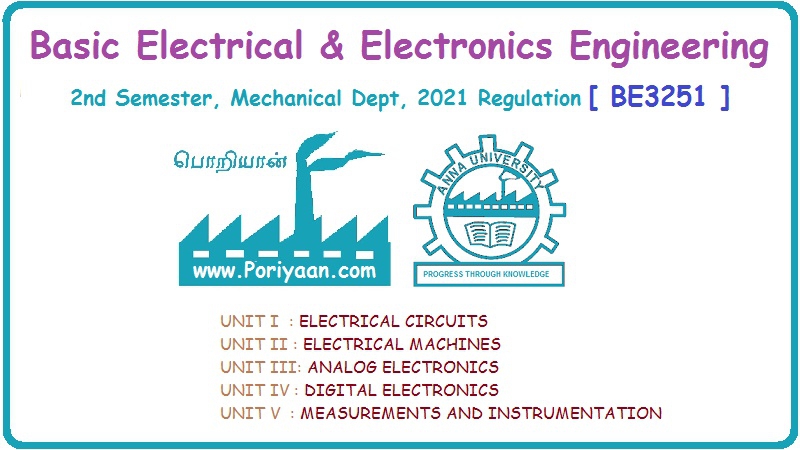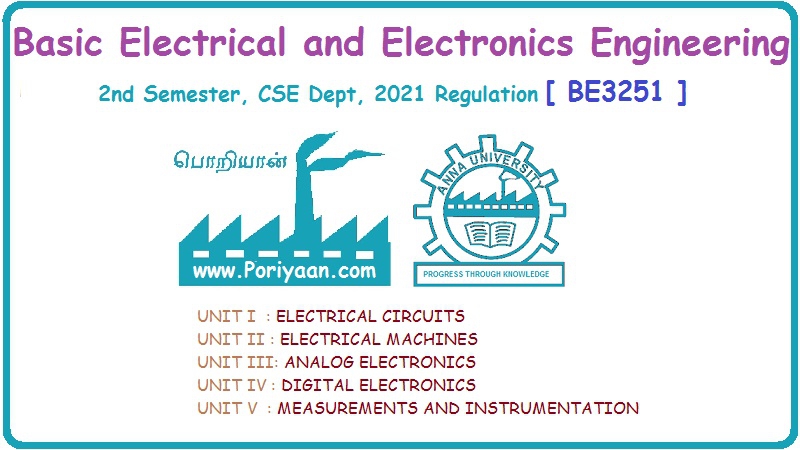Basic Electrical and Electronics Engineering: Unit II: Electrical Machines
Three Phase Voltage and Current
Where again, VL is the line-to-line voltage, and VP is the phase-to-neutral voltage on either the primary or the secondary side.
THREE
PHASE VOLTAGE AND CURRENT
Where
again, VL is the line-to-line voltage, and VP is the phase-to-neutral
voltage on either the primary or the secondary side.
Other
possible connections for three phase transformers are star-delta Yd, where the
primary winding is star-connected and the secondary is delta-connected or
delta- star Dy with a delta-connected primary and a star-connected secondary.
Delta-star
connected transformers are widely used in low power distribution with the
primary windings providing a three-wire balanced load to the utility company
while the secondary windings provide the required 4th-wire neutral or earth
connection.
When
the primary and secondary have different types of winding connections, star or
delta, the overall turns ratio of the transformer becomes more complicated. If
a three- phase transformer is connected as delta-delta (Dd) or star-star (Yy)
then the transformer could potentially have a 1:1 turns ratio. That is the
input and output voltages for the windings are the same.
However,
if the 3-phase transformer is connected in star - delta, (Yd) each star-
connected primary winding will receive the phase voltage, Vp of the supply,
which is equal to 1/√3 × VL.
Then
each corresponding secondary winding will then have this same voltage induced
in it, and since these windings are delta-connected, the voltage 1/√3 × VL
will become the secondary line voltage. Then with a 1:1 turns ratio, a
star-delta connected transformer will provide a √3:1 step-down line-voltage
ratio.
Then
for a star-delta (Yd) connected transformer the turns ratio becomes:
Star-Delta Turns Ratio
TR
= NP/NS = VP/√3VS
Likewise,
for a delta-star (Dy) connected transformer, with a 1:1 turns ratio, the
transformer will provide a 1:√3 step-up line-voltage ratio. Then for a
delta-star connected transformer the turns ratio becomes:
Delta-Star Turns Ratio
TR
= NP/NS = VP/√3VS
Then
for the four basic configurations of a three-phase transformer, we can list the
transformers secondary voltages and currents with respect to the primary line
voltage, VL and its primary line current IL as shown in
the following table.
Three-phase Transformer Line Voltage and Current
Where: n equals the transformers "turns ratio" (T.R.) of the number of secondary windings NS, divided by the number of primary windings NP.(NS/NP) and VL is the line-to-line voltage with VP being the phase-to-neutral voltage.
Basic Electrical and Electronics Engineering: Unit II: Electrical Machines : Tag: : - Three Phase Voltage and Current
Related Topics
Related Subjects
Basic Electrical and Electronics Engineering
BE3251 2nd semester Mechanical Dept | 2021 Regulation | 2nd Semester Mechanical Dept 2021 Regulation
Basic Electrical and Electronics Engineering
BE3251 2nd Semester CSE Dept 2021 | Regulation | 2nd Semester CSE Dept 2021 Regulation

